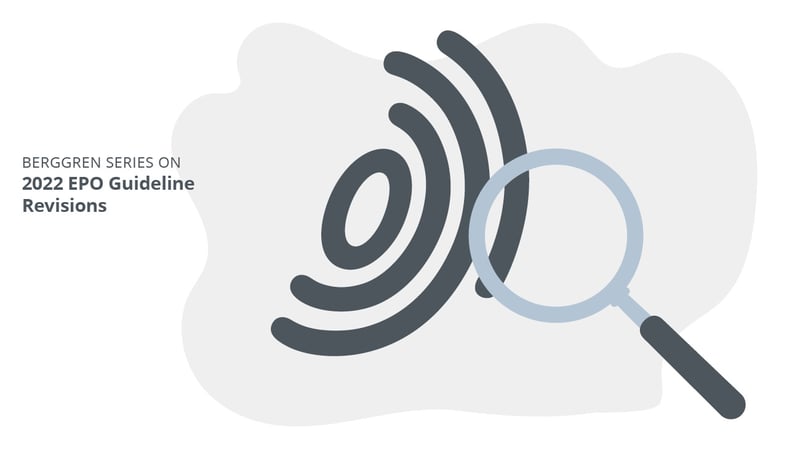This is the third article in our 2022 weekly series addressing updates to the European Patent Office’s Guidelines for Examination. This week we review changes to the Guidelines that define the way in which the EPO assesses the patentability of mathematical methods and artificial intelligence.
We will continue to address other revisions to the Guidelines in the European patent section of Monday’s Lexology newsfeed. In an upcoming article we will address the changes to the Guidelines related to the assessment of simulations following the Enlarged Board of Appeal’s decision in G1/19. (The first two articles in our EPO Guideline update series addressing (1) Amendments to the Description and (2) Partial Priority can be found here and here.)
Background
Article 52 of the European Patent Convention (“EPC”) explicitly states that programs for computers and mathematical methods as such cannot be patented but, over the years, a whole lot of wiggle room has been carved out from those two small words: “as such”.
The legal basis for granting patents in these otherwise forbidden areas of technology is that the inventions relate to more than just a computer program or mathematical method. In practice, this has developed into two distinct hurdles that an invention must overcome to avoid refusal.
The first hurdle, called the “any hardware” approach in the field of computer-implemented invention, is usually trivial – generally, the subject matter of the claims should require some hardware, something to tie it to a physical system that goes beyond just a computer program or mathematical method. This can be as trivial as defining that a method is “computer-implemented”, for example.
The second hurdle is not a standalone assessment like that of the first hurdle. Instead, it provides additional criteria to consider during the problem-solution approach to inventive step used by the EPO: once the differences between the claimed invention and a closest prior art document have been identified, a further step of identifying which of those differences are “technical” is introduced. In the later stages of the problem-solution approach – determining the objective technical problem and whether the solution is obvious – only those features that are considered to be “technical” can contribute to inventive step.
As a result, what is and what is not “technical” has been a hot topic, and has been controversial and constantly shifting, adapting to new technologies, since this approach was established in the early 2000s.
2022 EPO Guideline Updates
The section of the 2022 Guidelines describing how the issue of whether an invention is excluded from patentability under Art. 52 EPC has been completely rewritten. It has been updated to refer explicitly to the two hurdles described above, which have been a popular way to illustrate the approach though not used in the Guidelines before.
Aside from the changes related to G 1/19, which will be discussed in a forthcoming article, the discussion of mathematical methods in the Guidelines has been updated to include new examples of scenarios in which a mathematical method may be considered to be technical.
In particular, the changes discuss inventions where the specific technical implementation of a mathematical method is motivated by technical considerations about the computer system on which the mathematical method runs. Examples include mathematical methods that are implemented to bring about a technical effect such as efficient use of computer storage capacity or network bandwidth, and assigning the execution of data-intensive training steps of a machine-learning algorithm to a graphical processing unit (GPU) and preparatory steps to a standard central processing unit (CPU) to take advantage of the parallel architecture of the computing platform.
The examples, while illustrative, are not particularly groundbreaking additions to the Guidelines. The former reflects what is already normal practice at the EPO. The latter is a very specific example of a feature that is now so common in the field that, regardless of whether it’s technical, would still fall at the inventive step hurdle for being obvious.
A much more detailed example of how the second hurdle should be applied to an invention that includes artificial intelligence as a key element has also been added. The example relates to a method for coating a workpiece using a thermal spray coating process, and involves comparing monitored values with target values and automatically adjusting process parameters if the monitored values deviate from the target values based on an artificial neural network and fuzzy logic. The use of the neural network and fuzzy logic controller to adjust process parameters is considered to be technical, since it contributes to the control of the coating process, which is a technical effect.
Conclusions
Overall, the changes to the Guidelines do little to clarify the general rules by which features relating to mathematical methods or artificial intelligence are determined to be technical or not. Like the machine learning algorithms that are employed in these inventions, we’re given data points and expected to intuit the underlying rules from them. In that context, more data points are helpful, but are unlikely to lead to any significant shifts in understanding or practice.

